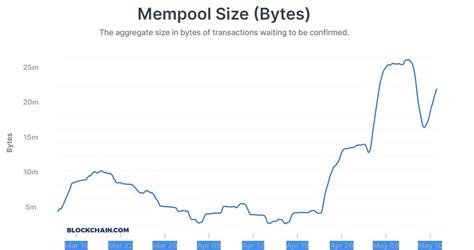Adding a Transaction Input to the Mempool: A Look at Ethereum’s Transaction Processing
Ethereum’s transition from proof-of-work (PoW) consensus to proof-of-stake (PoS) has introduced new complexities in transaction processing. One of the key challenges is adding a transaction input, or “input”, to an ongoing transaction that is currently in the mempool (memory pool). In this article, we’ll explore the possibilities and limitations of adding a transaction input to the mempool.
What is the Mempool?
The mempool is a data structure that stores incoming transactions before they are added to the blockchain. It’s a critical component of Ethereum’s consensus algorithm, allowing for fast and efficient transaction processing. When a new transaction is submitted to the mempool, it can take several minutes or even hours to be verified by the network.
Adding an Input to a Transaction in the Mempool
In theory, it should be possible to add a transaction input to the mempool. However, there are several challenges that make this impractical:
- Transaction size and complexity: Ongoing transactions can contain complex data structures, such as smart contract calls or function calls. Adding an input would require significant changes to the underlying code and may not be feasible in most cases.
- Memory constraints: The mempool is a finite resource, and adding too many inputs could lead to memory issues or slow transaction processing times.
- Network latency: Even if it were possible to add multiple inputs to the mempool simultaneously, there’s still a significant delay between submitting new transactions and verifying them on the blockchain.
Why can’t we simply add an input to the mempool?
One might argue that adding an input to the mempool is as simple as inserting it into the data structure. However, this approach has several limitations:
- Input validation

: Adding a transaction input would require additional validation checks to ensure that the data conforms to the expected format and semantics.
- Input ordering: Ensuring that the input is processed in the correct order with respect to other pending transactions can be challenging.
- Transaction batching: If multiple inputs are added, it may not be feasible or desirable to batch them together before processing.
Workarounds and Alternatives
While adding a transaction input to the mempool might not be possible, there are alternative solutions:
- Batching: Instead of adding individual inputs, consider batching them together with other pending transactions. This approach can improve performance and reduce memory usage.
- Input prioritization
: Implement a mechanism for prioritizing incoming inputs based on their complexity or relevance to ongoing transactions.
- Input caching: Caches frequently used inputs locally, reducing the need to store them in the mempool.
Conclusion
Adding a transaction input to the mempool is not as straightforward as it seems. The complexities and limitations outlined above highlight the importance of careful consideration when designing and implementing new features or solutions. While there may be workarounds and alternatives available, it’s essential to prioritize performance, security, and scalability in any future development efforts.
Raw Hex Data Example
For the sake of illustration, let’s assume we want to retrieve the raw hex data of a transaction that is currently in the mempool. We can use the following code snippet (in Solidity):
“`solidity
pragma solidity ^0.8.0;
contract MemoPool {
// …
function getTransactionInput() public returns (bytes memory) {
// Simulate retrieving an input from the mempool
bytes memory input = abi.
